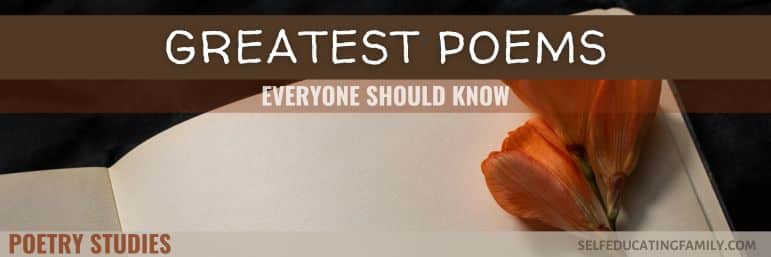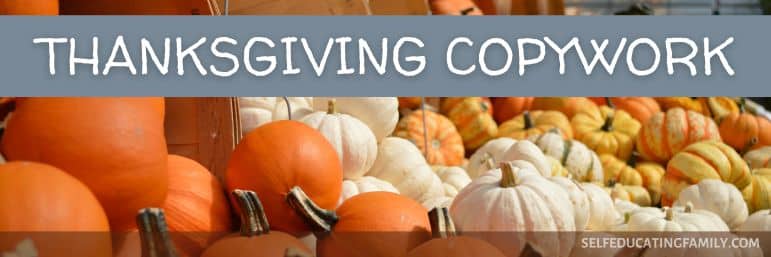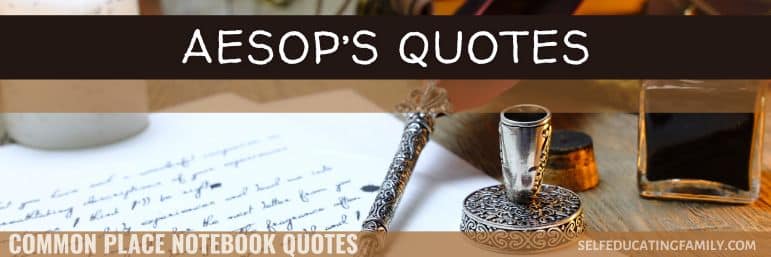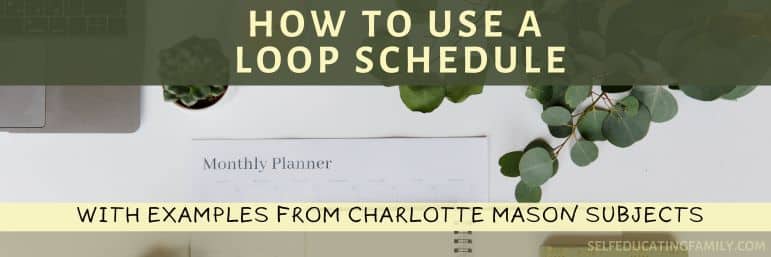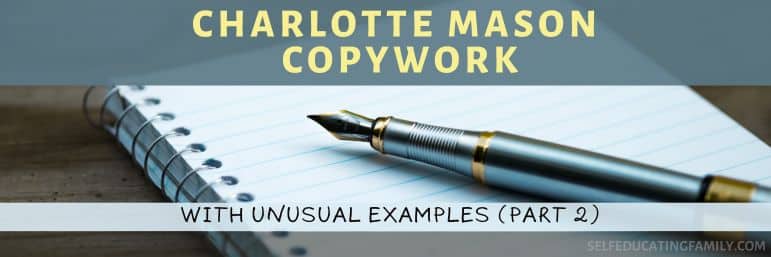What’s inside: 10 of the Best Emily Dickinson Quotes – great for copywork or your commonplace notebook.
This post may contain affiliate links. If you find my content valuable and make a purchase through one of my links, I will earn a commission at no cost to you, which helps me keep this blog going so I can help you even more! I recommend products I trust and/or use myself, and all opinions I express are my own. Read the full disclaimer here.
Best Emily Dickinson Quotes
Poetry is an excellent source for your copywork. As your penmanship moves beyond fluency to mastery, you should consider putting your favorite quotes in your commonplace notebook.
This Collection
I’ve gathered my personal favorite quotes from Emily Dickinson. Maybe I exaggerate when I say they are the best, but here’s my reasoning.
I think they are some of the best quotes from Emily Dickinson for two reasons.
- They are not too long.
- I admit it. I often select passages that are the length I know only takes a few minutes. Copywork happens every day, but it doesn’t have to take a long time. More often is better than more.
- Remember: 6 perfect strokes!
- You can break up longer passages over several days.
- You can test how long it takes you (the parent) to write a passage. Last year, around Thanksgiving, I timed my own handwriting of gratitude quotes to get an idea of how long it should take for someone at the mastery level.
- Obviously, if your kids are not yet at mastery level, they will take longer to write than you. And conversely, if you have a fast writer and you are a slow writer, they may write faster than you. The point is not speed but accuracy. I timed it in order to get a general idea of how much my kids might be expected to write in a short session.
- I admit it. I often select passages that are the length I know only takes a few minutes. Copywork happens every day, but it doesn’t have to take a long time. More often is better than more.
- I liked the words she used.
- With poetry, I’ve discovered that it is totally ok to have opinion. You should select passages that come alive to you.
- Words to a poet are like paint to an artist. This is their craft and they excel at the selection of words. You can usually find great words for your copywork selections.
- Grammar, word usage, and vocabulary are enhanced with great selections.
Two More Reasons
- Living literature: I think this qualifies as “living books” (even though it’s not a book per se.)
- Living books enrich the mind. They are part of setting the feast before your children.
- When you select copywork from living literature, you are training the mind to see great ideas as well as the way the words are put together.
- I tend towards more of her hopeful quotes.
- Some of the main themes in Emily Dickinson’s poetry were love, hope, death, and immortality. I only included the most famous quote about death in the small quotes section.
- But I’ve included a couple of the full poems with death and immortality as the main theme.
10 Short Emily Dickinson Quotes
These are perfect for copywork. Both print and cursive. They include some of her most recognizable lines.
“Hope is the thing with feathers
― Emily Dickinson
That perches in the soul
And sings the tune without the words
And never stops at all.”
“I dwell in possibility…”
“To live is so startling it leaves little time for anything else.”
“Pardon My Sanity In A World Insane”
“Beauty is not caused. It is.”

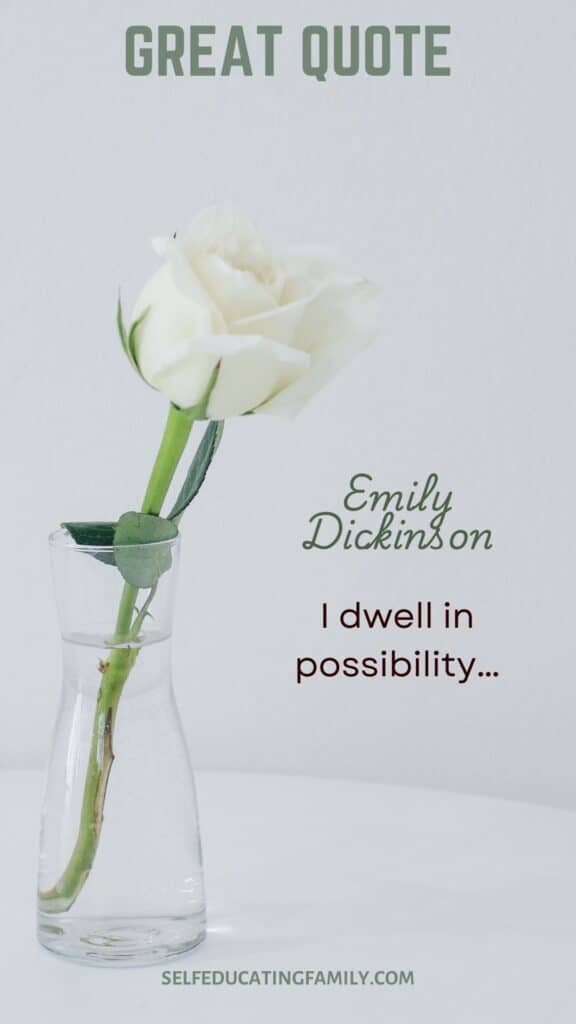
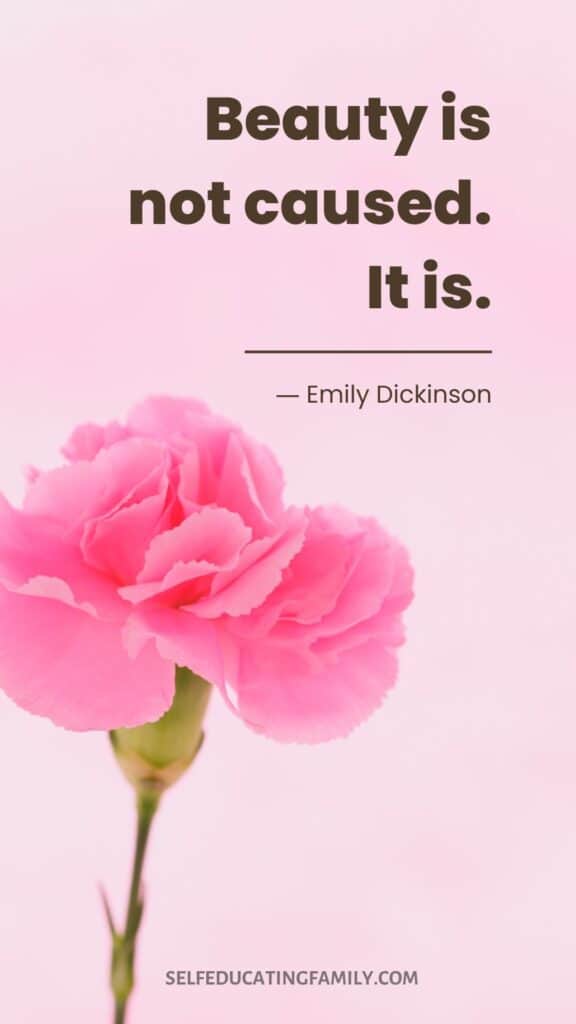
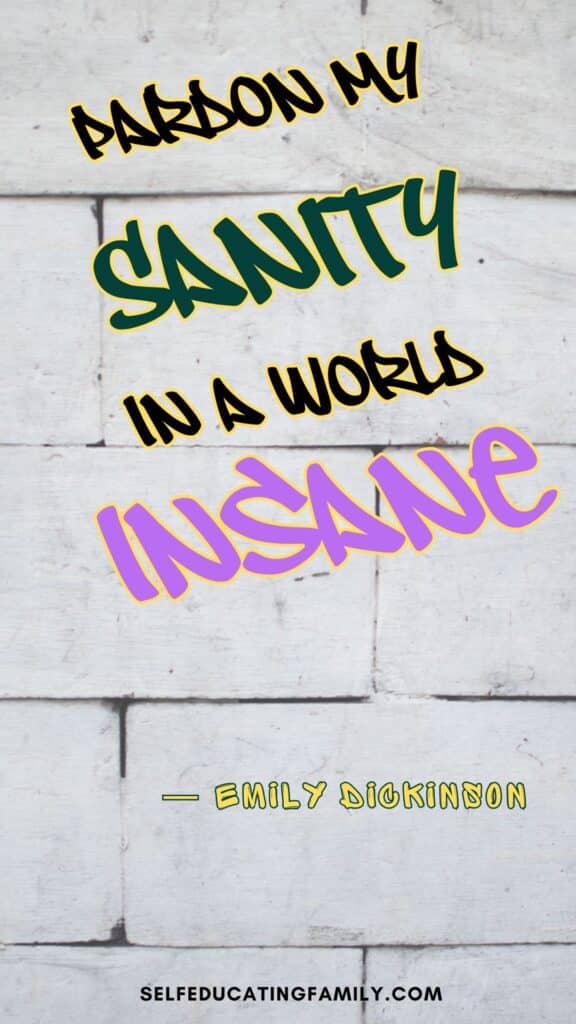

“Because I could not stop for Death –
― Emily Dickinson
He kindly stopped for me –
The Carriage held but just Ourselves –
And Immortality.”
“Truth is so rare, it is delightful to tell it.”
“Hold dear to your parents for it is a scary and confusing world without them.”
“Behavior is what a man does, not what he thinks, feels, or believes.”
“That love is all there is, Is all we know of love.”

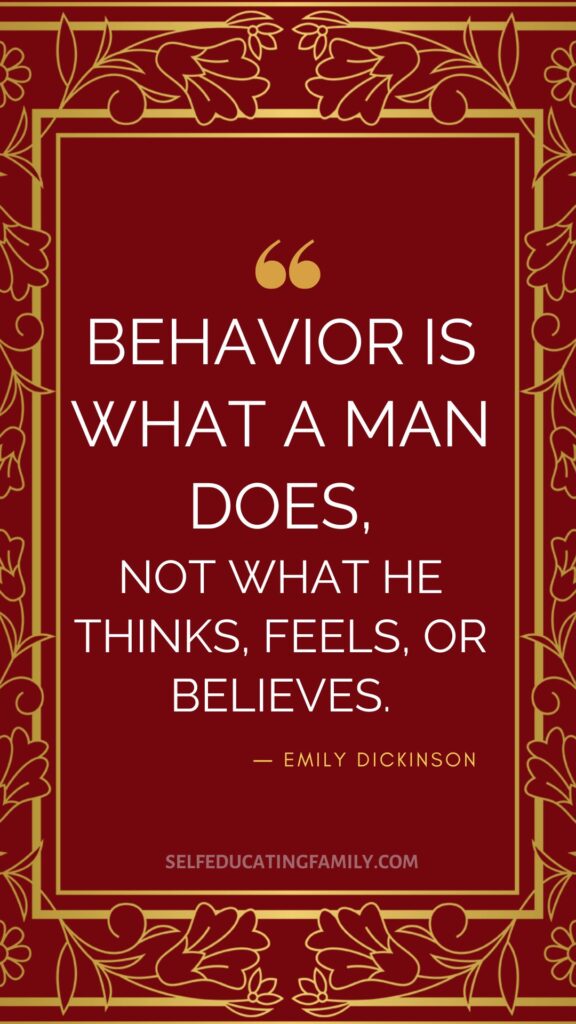
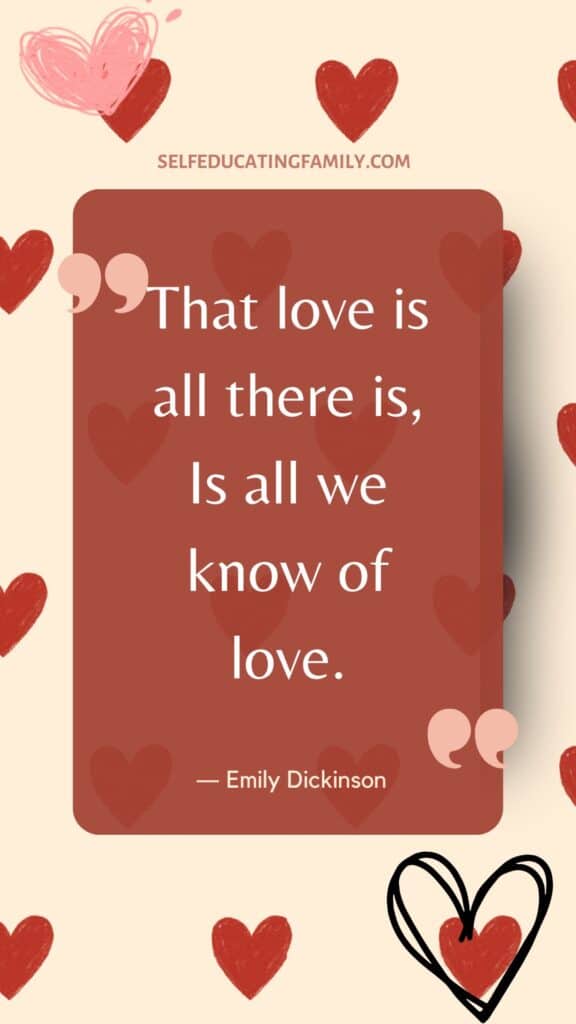
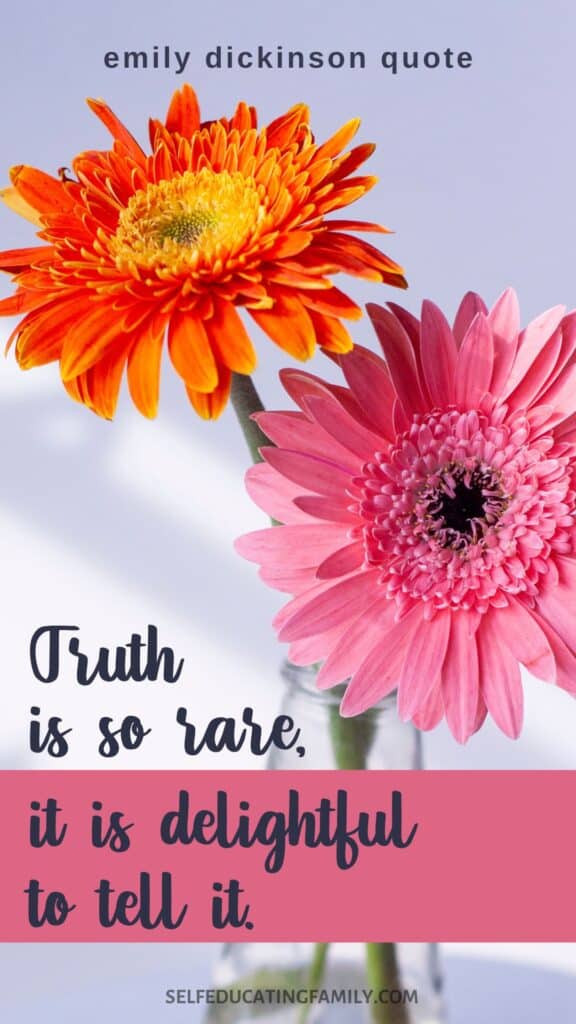
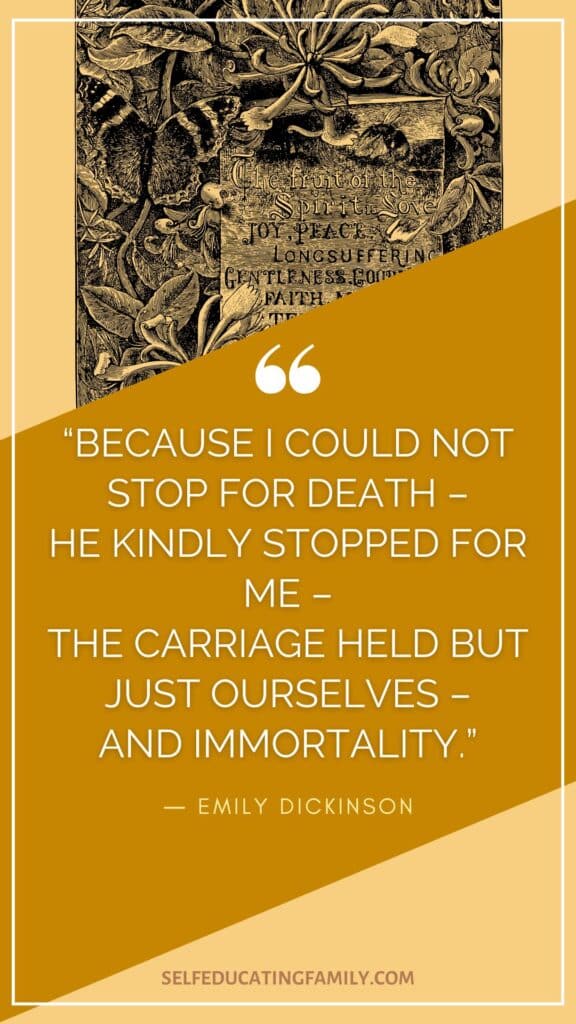
Full Poems of Emily Dickinson
Older students who are used to writing longer passages may want to work on a full poem. It doesn’t have to be completed in one day, but your student may take 10 or 15 minutes in a copywork session.
This would be appropriate for students who are fluent (in either print or script) and need additional practice while working towards mastery.
In addition, these selections are great for their commonplace notebooks if they are taken by a particular poem. Generally, students will make their own selections for their commonplace notebook, especially if they are older, independent learners. If they are younger and just starting out with their commonplace notebooks, you can make a suggestion that they might want to include a poem or quote if they like it in particular.
We always did a selection as copywork first then re-copied it as a commonplace selection. In other words, a bit of practice on paper that could be thrown away, then recorded the selection in the permanent commonplace notebook.
Is this Emily Dickinson’s Best Poem?
Now, if you’re looking for longer copywork, then see if you think this is her best poem. It’s the full poem of “Hope is the Thing with Feathers” written in 1861.
“Hope” is the thing with feathers –
That perches in the soul –
And sings the tune without the words –
And never stops – at all –
And sweetest – in the Gale – is heard –
And sore must be the storm –
That could abash the little Bird
That kept so many warm –
I’ve heard it in the chillest land –
And on the strangest Sea –
Yet – never – in Extremity,
It asked a crumb – of me.
Or is this?
This one is called “I Heard a Fly Buzz” and was written in 1862. You’ll note that Emily Dickinson didn’t actually title her poems, so the convention now is to say the title was the first line.
This poem is written from the perspective of the corpse, I think.
I heard a Fly buzz– when I died–
The Stillness in the Room
Was like the Stillness in the Air –
Between the Heaves of Storm–
The Eyes around– had wrung them dry–
And Breaths were gathering firm
For that last Onset– when the King
Be witnessed– in the Room–
I willed my Keepsakes– Signed away
What portions of me be
Assignable– and then it was
There interposed a Fly–
With Blue– uncertain– stumbling Buzz–
Between the light– and me –
And then the Windows failed – and then
I could not see to see–
Or was it this?
Here’s another poem with the theme of death and immortality. “It was not Death, for I Stood Up” written in 1862.
It was not Death, for I stood up,
And all the Dead, lie down–
It was not Night, for all the Bells
Put out their Tongues, for Noon.
It was not Frost, for on my Flesh
I felt Siroccos– crawl–
Nor Fire– for just my Marble feet
Could keep a Chancel, cool–
And yet, it tasted, like them all,
The Figures I have seen
Set orderly, for Burial,
Reminded me, of mine–
As if my life were shaven,
And fitted to a frame,
And could not breathe without a key,
And ’twas like Midnight, some–
When everything that ticked– has stopped–
And Space stares– all around–
Or Grisly frosts– first Autumn morns,
Repeal the Beating Ground–
But, most, like Chaos– Stopless– cool–
Without a Chance, or Spar–
Or even a Report of Land–
To justify– Despair.
Or this?
I think this is the most famous poem on death and immortality. Not sure if that makes it the best poem. I’m more inclined to the hopeful feathers. Here’s “Because I could not stop for Death” written in 1863.
Because I could not stop for Death–
He kindly stopped for me–
The Carriage held but just Ourselves–
And Immortality.
We slowly drove– He knew no haste
And I had put away
My labor and my leisure too,
For His Civility–
We passed the School, where Children strove
At Recess– in the Ring–
We passed the Fields of Gazing Grain–
We passed the Setting Sun–
Or rather– He passed Us–
The Dews drew quivering and Chill–
For only Gossamer, my Gown–
My Tippet– only Tulle–
We paused before a House that seemed
A Swelling of the Ground–
The Roof was scarcely visible–
The Cornice– in the Ground–
Since then– ’tis Centuries– and yet
Feels shorter than the Day
I first surmised the Horses’ Heads
Were toward Eternity–
Or this?
I like this one because it’s about books. And how great ideas within books are for anyone. But that’s just what I hear when I read it. That’s the fun thing about poetry – it speaks differently to different people, so it’s fine to have other ideas about a poem and what it says.
Here’s “There is No Frigate Like a Book”.
There is no Frigate like a Book
To take us Lands away,
Nor any Coursers like a Page
Of prancing Poetry –
This Traverse may the poorest take
Without oppress of Toll –
How frugal is the Chariot
That bears a Human soul.
Another one
“There’s a Certain Slant of Light” is another one up for “Best Poem”.
There’s a certain Slant of light,
Winter Afternoons –
That oppresses, like the Heft
Of Cathedral Tunes –
Heavenly Hurt, it gives us –
We can find no scar,
But internal difference –
Where the Meanings, are –
None may teach it – Any –
‘Tis the seal Despair –
An imperial affliction
Sent us of the Air –
When it comes, the Landscape listens –
Shadows – hold their breath –
When it goes, ’tis like the Distance
On the look of Death –
Make your selection
Which poem did you like the best? Emily Dickinson has many more to choose from.
Enjoy your poetry studies with Dickinson and enjoy the work you do with copywork using these selections.
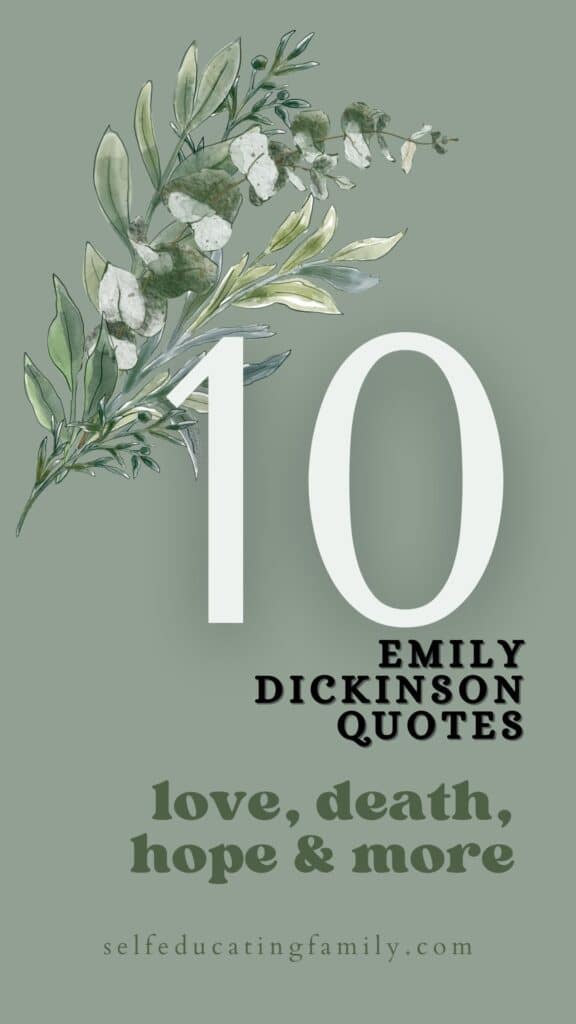
Keep on Learning
If you are looking for a good collection of Emily Dickinson’s poetry, Franklin has a reading edition which is very good. He also has the definitive 3-volume Variorum complete collection, but it’s a bit pricey — if you ever see it at an affordable price at a used book sale, grab it.
Another good version is Christanne Miller’s Emily Dickinson’s Poems: As She Preserved Them. This version separates the poems that it appears Dickinson choose as “finished”. Emily copied them carefully onto folded sheets of paper. It’s funny to think that Emily Dickinson used her own poems as copywork. You can think of that as you re-copy her poems!


